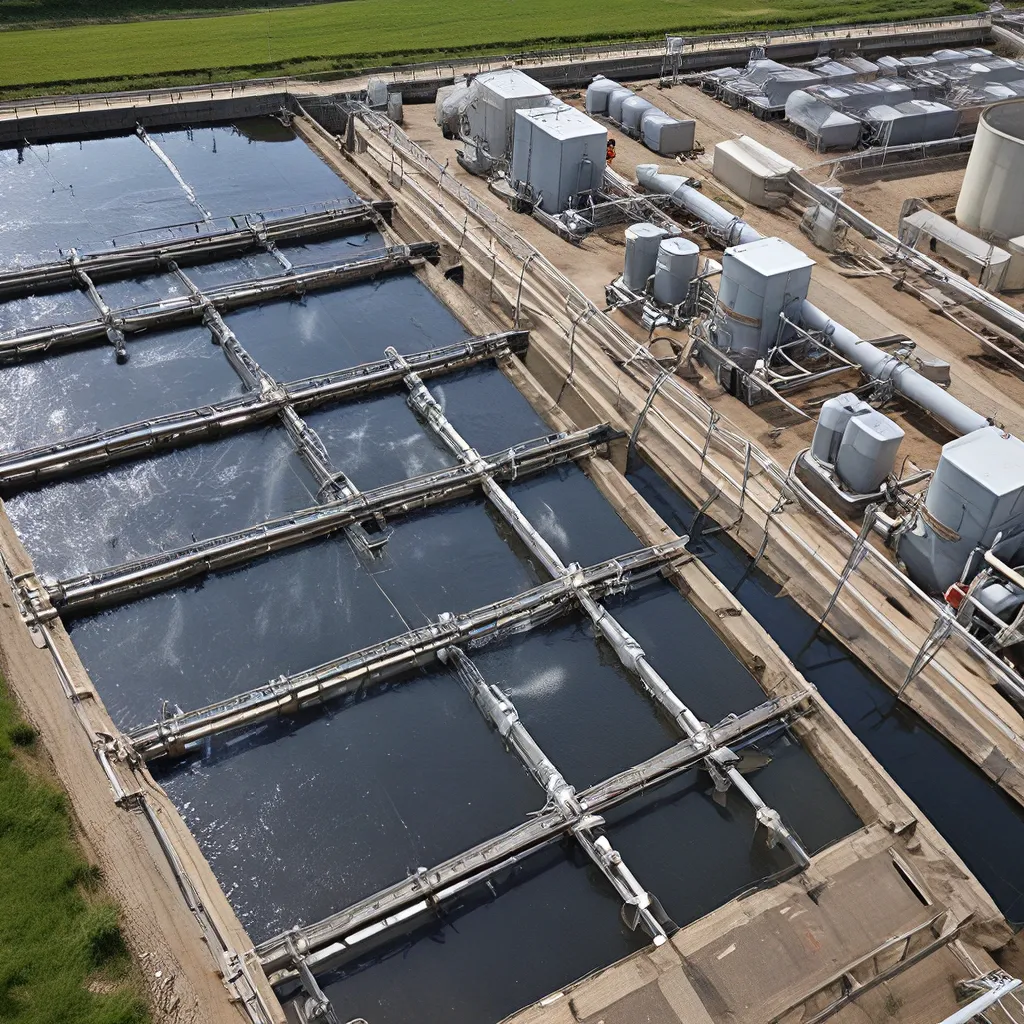
As the world becomes increasingly conscious of the need for sustainable practices, the wastewater treatment industry has been at the forefront of innovation. One such groundbreaking development is the integration of renewable energy into the operations of wastewater treatment plants (WWTPs). This shift not only reduces the industry’s environmental footprint but also holds the promise of energy neutrality – a state where WWTPs can generate enough renewable energy to power their own operations.
Tapping into the Power of Biogas
At the heart of this renewable energy revolution lies the biogas generated during the wastewater treatment process. Biogas, a methane-rich byproduct, can be captured and converted into electricity and heat, powering the very facilities that produce it. The Western Lake Superior Sanitary District (WLSSD) in Duluth, Minnesota, has pioneered this approach with its Combined Heat and Power (CHP) energy project.
By harnessing the biogas currently produced at its regional wastewater plant, WLSSD is able to generate more than a third of the electricity needed to power its treatment facility. But the district isn’t stopping there. “WLSSD also plans to reclaim additional wastes to increase biogas production,” the source information reveals. With a $249 million investment over the next 5 years, WLSSD is on a mission to cut its electricity purchases in half or more, moving it closer to its goal of energy neutrality.
Unlocking the Potential of ‘Blue Energy’
While biogas-powered energy generation is a significant step forward, there’s another untapped renewable energy source that’s gaining attention in the wastewater treatment industry: ‘blue energy’. This refers to the energy that can be harvested from the mixing of salty ocean water and freshwater.
Researchers at Stanford University have developed an affordable and durable battery technology that can capture this salinity gradient energy, also known as ‘blue energy’. The potential of this technology is particularly promising for coastal wastewater treatment plants, which could potentially become energy-independent by harnessing the power of the ocean.
According to the Stanford study, “Every cubic meter of freshwater that mixes with seawater produces about 65 kilowatt-hours of energy – enough to power the average American house for about 30 minutes.” Globally, the theoretically recoverable energy from coastal wastewater treatment plants is estimated to be around 18 gigawatts – enough to power more than 15 million homes continuously.
The Path to Energy Neutrality
While the progress made in renewable energy integration is undoubtedly exciting, the journey towards energy neutrality for WWTPs is not without its challenges. Wastewater treatment is an energy-intensive process, accounting for about 3% of the total U.S. electrical load. Achieving energy neutrality will require a multifaceted approach, with a focus on both renewable energy generation and energy efficiency measures.
One such energy efficiency initiative is the Hyperion Water Reclamation Plant on Santa Monica Bay in Los Angeles, which is exploring the potential of harnessing ‘blue energy’ to supplement its operations. By tapping into the salinity gradient between the treated effluent and the surrounding seawater, the plant could potentially become more self-sufficient and resilient to power grid disruptions.
Overcoming Hurdles and Embracing Innovation
The transition to energy-neutral wastewater treatment facilities is not without its obstacles. Scalability, cost-effectiveness, and technological limitations are all factors that must be carefully navigated. However, the innovative spirit of the industry is already shining through.
Researchers are exploring new materials and battery designs to improve the efficiency and affordability of ‘blue energy’ capture systems. Meanwhile, ongoing research aims to address the challenge of tapping into the global potential of blue energy, beyond just coastal wastewater treatment plants.
As I reflect on the remarkable progress in this field, I can’t help but feel a sense of optimism. The wastewater treatment industry’s embrace of renewable energy solutions is not only environmentally responsible but also economically viable. By harnessing the power of biogas and ‘blue energy’, these facilities are becoming more self-sufficient, resilient, and sustainable.
Towards a Greener Future
The journey towards energy neutrality in wastewater treatment is an exciting and dynamic one. Innovations like WLSSD’s CHP project and the Stanford-developed ‘blue energy’ battery are paving the way for a future where WWTPs can generate their own renewable power, reduce their carbon footprint, and become beacons of sustainability.
As I explore the ongoing research and real-world applications of these technologies, I’m reminded of the transformative potential of the wastewater treatment industry. By investing in renewable energy solutions, facilities like Alpha Wastewater are not only contributing to a greener future but also setting an example for other industries to follow.
The path towards energy neutrality may be long and winding, but with the dedication, innovation, and vision of industry leaders, I believe the wastewater treatment sector is poised to become a shining example of sustainable energy practices. It’s an exciting time to be a part of this journey, and I can’t wait to see what the future holds.